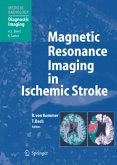Leading experts in the use of MRI explain its basic principles and demonstrate its power to understand biological processes with numerous cutting-edge applications. To illustrate its capability to reveal exquisite anatomical detail, the authors discuss MRI applications to developmental biology, mouse phenotyping, and fiber architecture. MRI can also provide information about organ and tissue function based on endogenous cantrast mechanisms. Examples of brain, kidney, and cardiac function are included, as well as applications to neuro and tumor pathophysiology. In addition, the volume demonstrates the use of exogenous contrast material in functional assessment of the lung, noninvasive evaluation of tissue pH, the imaging of metabolic activity or gene expression that occur on a molecular level, and cellular labeling using superparamagnetic iron oxide contrast agents.
From the reviews:
"Magnetic Resonance Imaging: Methods and Biologic Applications offers something of interest for MRI novices as well as more experience practitioners. The language is clear and easy to read, and the diagrams ... are very helpful." (AuntMinnie.com, February, 2006)
"This book is one of a large series of books on Methods in Molecular Medicine, edited by John M. Walker with 28 contributors ... . The authors are distinguished, primary basic scientists in basic science departments or departments of cardiology or radiology. ... I believe this book would be valuable for departments that are about to use or are using MRI as a research tool ... and as an addition to department libraries dealing with this technique." (Joseph P. Whalen, Clinical Imaging, Vol. 30, 2006)
"Magnetic Resonance Imaging: Methods and Biologic Applications offers something of interest for MRI novices as well as more experience practitioners. The language is clear and easy to read, and the diagrams ... are very helpful." (AuntMinnie.com, February, 2006)
"This book is one of a large series of books on Methods in Molecular Medicine, edited by John M. Walker with 28 contributors ... . The authors are distinguished, primary basic scientists in basic science departments or departments of cardiology or radiology. ... I believe this book would be valuable for departments that are about to use or are using MRI as a research tool ... and as an addition to department libraries dealing with this technique." (Joseph P. Whalen, Clinical Imaging, Vol. 30, 2006)









